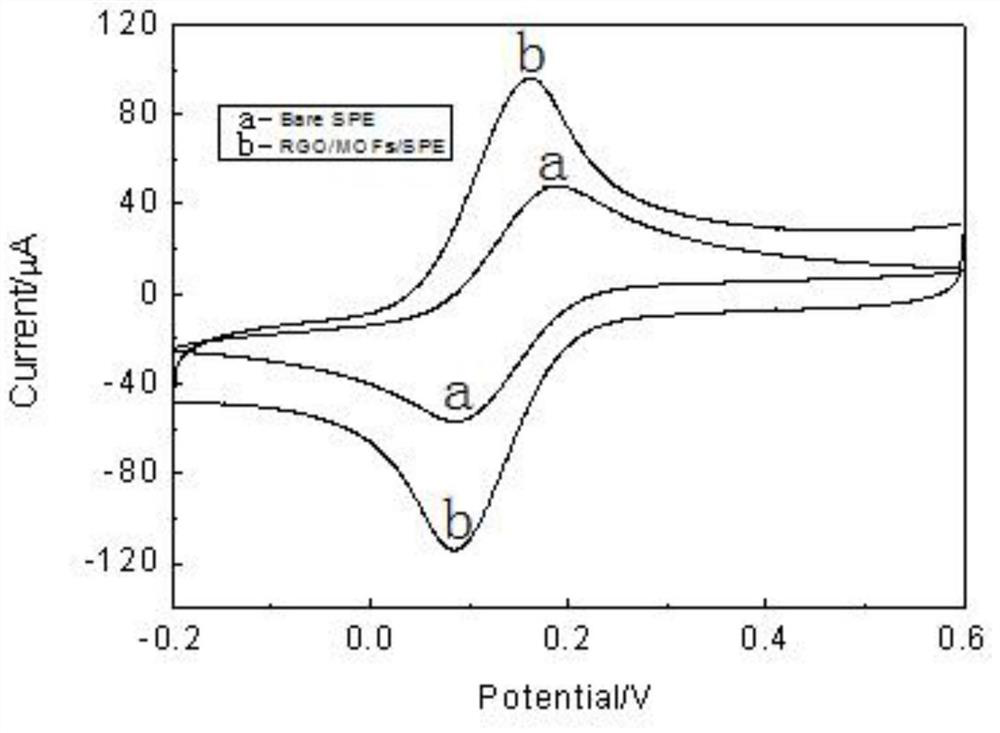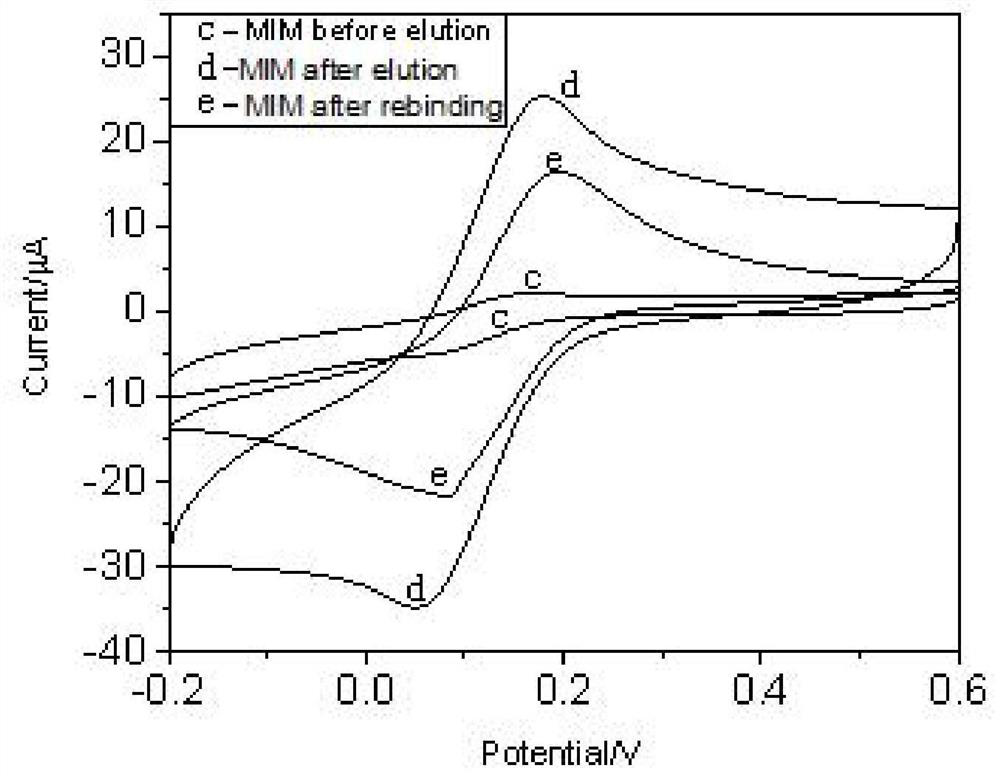A molecular imprinting electrochemical detection method for ketamine drug
A technology of molecular imprinting and detection method, which is applied in the field of electrochemical detection of molecular imprinting of ketamine drugs, can solve the problems of long detection period, influence on detection results, and inability to complete on-site rapid detection, and achieve short detection time, high detection sensitivity, and high detection efficiency. short cycle effect
- Summary
- Abstract
- Description
- Claims
- Application Information
AI Technical Summary
Problems solved by technology
Method used
Image
Examples
Embodiment 1
[0029] A molecular imprinting electrochemical detection method for ketamine drugs proposed by the present invention comprises the following steps:
[0030] 1. Preparation of high-purity graphene-loaded MOFs suspension: 1 mg / ml graphene and 1 mg / ml MOFs suspension were ultrasonically treated by an ultrasonic processor for 3-4 hours, so that MOFs were evenly loaded on the graphene sheet.
[0031] 2. Preparation of graphene / MOFs modified electrode: Take 3 μL of high-purity graphene-loaded MOFs suspension, drop-coat it on the surface of the screen-printed electrode twice, and let it dry naturally to obtain a graphene / MOFs modified electrode.
[0032] 3. Take 2 μL of molecularly imprinted polymer solution and drop-coat it on the graphene / MOFs modified electrode, place the UV lamp 22cm directly above the screen-printed electrode in a dark box, and UV-induced polymerization for 180 minutes to obtain the MIM / RGO / MOFs modification electrode.
[0033] Scanning electron microscopy exper...
Embodiment 2
[0041] In order to further optimize the technical scheme in Example 1, the amount of high-purity graphene-supported MOFs suspension in this example is 1.5-4 μL. When the amount of high-purity graphene suspension is less than 3 μL, the peak current increases with the increase of the dosage, and after more than 3 μL, the peak current decreases with the increase of the dosage. It is recommended to choose 3 μL as the optimal dosage.
Embodiment 3
[0043] In order to further optimize the technical scheme in Example 1 and the polymerization conditions of the molecularly imprinted polymeric membrane, in this example, ketamine is selected as the template molecule, MAA is used as the functional monomer and the crosslinking agent EGDMA, and the molar ratio of the three is 1:4 : 60; the removal of template molecules in the polymembrane selects methyl alcohol: acetic acid is 9: 1 (volume ratio) as eluent with the speed elution of 180 revolutions per second 30min, after washing several times with deionized water; The adsorption time is selected as 10min. At this point, the adsorption of ketamine on the blot reached equilibrium. Because the incubation time continues to increase, the peak current basically does not change.
PUM
 Login to View More
Login to View More Abstract
Description
Claims
Application Information
 Login to View More
Login to View More - R&D
- Intellectual Property
- Life Sciences
- Materials
- Tech Scout
- Unparalleled Data Quality
- Higher Quality Content
- 60% Fewer Hallucinations
Browse by: Latest US Patents, China's latest patents, Technical Efficacy Thesaurus, Application Domain, Technology Topic, Popular Technical Reports.
© 2025 PatSnap. All rights reserved.Legal|Privacy policy|Modern Slavery Act Transparency Statement|Sitemap|About US| Contact US: help@patsnap.com



